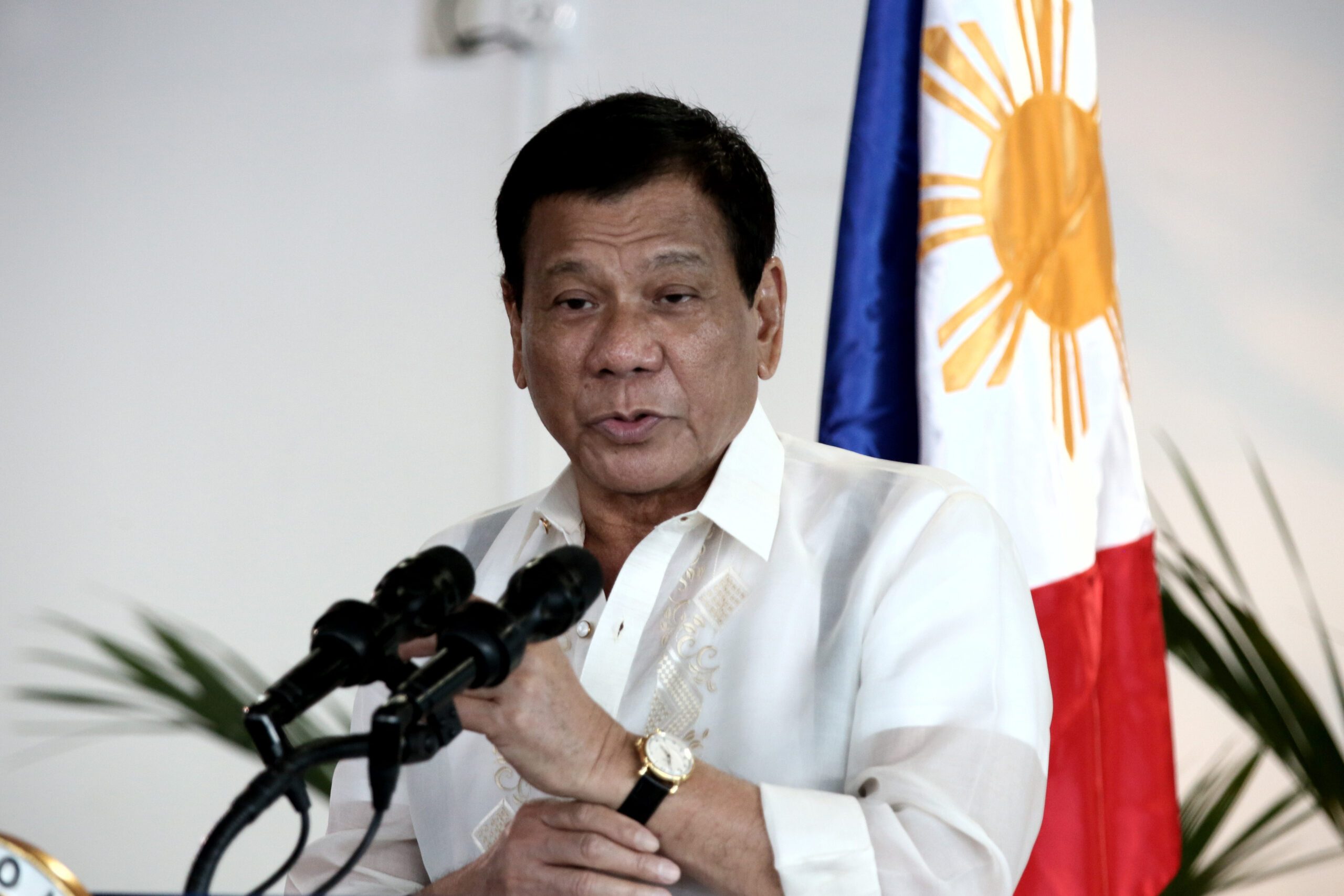SUMMARY
This is AI generated summarization, which may have errors. For context, always refer to the full article.

MOSCOW, Russia – The martial law in Mindanao which President Rodrigo Duterte just declared will be no different from martial law during the time of Ferdinand Marcos, the President himself said before flying back to the Philippines.
“Martial law is martial law ha. It will not be any different from what the President, Marcos did. I’d be harsh,” said Duterte early morning Wednesday, May 24, according to the Facebook Live video of Presidential Communications Assistant Secretary Mocha Uson.
He was speaking on board the presidential plane right before it took off for Manila.
“I was asked how I would deal with terrorism. I said I’d be harsh. I told everyone, ‘do not force my hand into it,'” he added.
He did not elaborate on this in the short video but did mention the likely timeframe of his martial law declaration.
“How long? Well, if it would take a year to do it then we’ll do it. If it’s over in a month I’d be happy,” he said.
The Constitution says it should not initially exceed 60 days; any extension has to be approved by Congress.
Presidential Spokesman Ernesto Abella himself earlier said it would last 60 days. (READ: Martial law 101)
Section 18, Article VII of the 1987 Philippine Constitution says that the President, as commander-in-chief, may “in case of invasion or rebellion, when the public safety requires it” suspend the privilege of the writ of habeas corpus or place the country under martial law. The writ safeguards individual freedom against arbitrary state action.
Constitutional limits
Crafted after the EDSA People Power revolution that ousted Marcos in 1986, the 1987 Constitution highlights the role of other branches of government in the martial law declaration. The provisions are meant precisely to prevent grave abuse and stop another Marcos from tinkering with civil rights.
Thus within 48 hours after its declaration, the President shall submit a report “in person or in writing” to Congress. The declaration can also be revoked by via a vote by Congress, now controlled by Duterte allies.
The Supreme Court may review the basis of its declaration.
Dark period
Duterte is the 3rd Philippine president to declare martial law since 1972, when Marcos declared one – a dark chapter in Philippine history that was marked by abuse, violence and corruption.
On December 5, 2009, then president Gloria Macapagal Arroyo declared martial law in Maguindanao, also in the southern Philippines, through Proclamation 1959, following the massacre of 58 people – mostly members of the media – in the town of Ampatuan.
But it was short. Arroyo lifted it 7 days later on December 12, 2009 upon the recommendation of the Cabinet.
Duterte declared martial law Tuesday night after the Maute terrorist group seized the Islamic city of Marawi.
But he’s been warning about it. On May 19, he said in a speech, “If I declare martial law in Mindanao, I will solve all the ills of Mindanao.”
The military has been running a two-front anti-terror campaign in Mindanao – the one against the Abu Sayyaf Group (ASG) based in Western Mindanao in the islands of Sulu and Basilan, and another against the Maute and its Abu Sayyaf allies in the Lanao provinces in Northern Mindanao.
Defense Secretary Delfin Lorenzana said Tuesday that the military operation in Marawi targeted ASG leader Isinilon Hapilon, who was believed to have been spotted in the area.
In an earlier press conference in Moscow, Lorenzana said that all the usual trappings of martial law would come with Duterte’s recent declaration.
“All that should be done under martial law, we will implement – control of movement, searches and arrest of detained people, suspension of writ of habeas corpus,” he said.
The President departed from Moscow at around 1:30 am Moscow time. He is scheduled to arrive in Manila at 4:30 pm, Manila time.
As of writing, Malacañang has not yet issued the document bearing Duterte’s martial law declaration. – Rappler.com
Add a comment
How does this make you feel?
There are no comments yet. Add your comment to start the conversation.